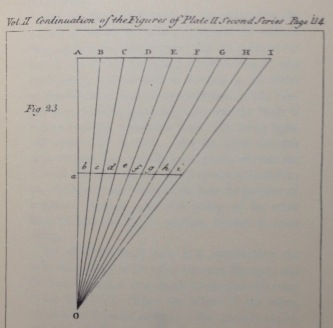In a 2012 Education Week article, Justin Reich, an internet education specialist, wrote that Khan Academy’s math courses overemphasize procedure. In other words, Khan’s math video lectures explain the steps to solve a problem, but they don’t take time to explain the concept behind the steps. In the words of the author, “writing about mathematics, developing a disposition for mathematical thinking, demonstrating a conceptual understanding of mathematical topics are all more important than procedures.”
But, procedures ARE important, and sometimes, that is what you need. For example, if you are stuck on the side of the road with a flat tire, someone needs to know the steps required to fix the problem in as few steps as possible. You are not interested in the physics behind hydraulic jacks or who invented vulcanized rubber (Charles Goodyear). You have a crisis, and it requires a pragmatic solution. So, maybe you are studying for a big test like the SAT, and it’s in 2 weeks, and suddenly you realize there’s a concept you need to practice some more. This would be a time when Khan Academy might be helpful to you.
But, a good education isn’t really about pragmatism, about skimming through a subject, learning the bare minimum, so you can check it off your transcript or pass a standardized test. And then forget about it.
Shormann Math is different. Certainly, there are times when procedure is emphasized, like our step-by-step video solutions for every homework problem, for example. But there are more things, deeper things, that Shormann Math emphasizes that others, like Khan or Reich or the National Council of Mathematics Teachers either don’t, or won’t.
At the heart of mathematics is a story, an amazing story of the history of humans seeking to discover more about the world around them. And it’s a story that is best understood from a Christian foundation.
Here’s why. To his credit, in Khan Academy’s introductory Algebra 1 lesson, Sal Khan dives into the origins of algebra. In describing the date of the first algebra book (820 A.D.), Khan makes a well-meaning, respectful attempt to distinguish the “religious” B.C. and A.D. from the “non-religious” common era descriptions of historical dates. Of course, the problem here is that Christianity is the only “religion” considered here. But Christianity is most definitely not a religion, a mere set of rules to keep or procedures to follow.
At its core, Christianity is about a relationship. And that’s a surprisingly hard truth for some to acknowledge. Christianity is about a relationship between God the Father, Son and Holy Spirit, between humans and God, and between humans and humans. Simply put, Christianity is about how this relates to that. But so is mathematics, which is not surprising since its normal for created things to reflect the attributes of their designers. Relationships always tell a story, over time. Which is why history matters in Christianity, and therefore in mathematics, too.
So, with Khan Academy, a student might feel connected to mathematics when they are finished, which is not a bad thing. With Shormann Math though, while our students are connecting to mathematics in measurable ways (see next post on results), we are also connecting them to the story behind mathematics. And the story is that, throughout history, mathematics is a tool for studying the world around us. So, we give students the mathematical tools to use in their thinking about the world, and give them a chance to practice using them in a variety of situations they might encounter in their everyday lives. But we also tell them who discovered the tools, plus some interesting things about their life stories.
Everyone loves a good story! That the story of mathematics is largely missing from popular, secular math teaching methods like Khan Academy could partly explain why mathematics is often the least-liked, most dreaded subject of all. Overemphasizing procedure may get you an algebra credit, but it won’t necessarily develop the STEM and STEAM skills so often desired.
But what if story is included, so that students get to know the major players influencing modern mathematics? With Shormann Math, we are finding that telling the story of mathematics makes learning math more real, and in the end, easier. If students are inspired by the experiences of historical figures, or by what God’s word says about math, they are more likely to know what to do with the math tools they are becoming fluent with. And if Shormann Math students are more fluent than students using more secular and disconnected methods, then when the opportunity to use math comes along, Shormann Math students will likely be more prepared.
 s
s 










